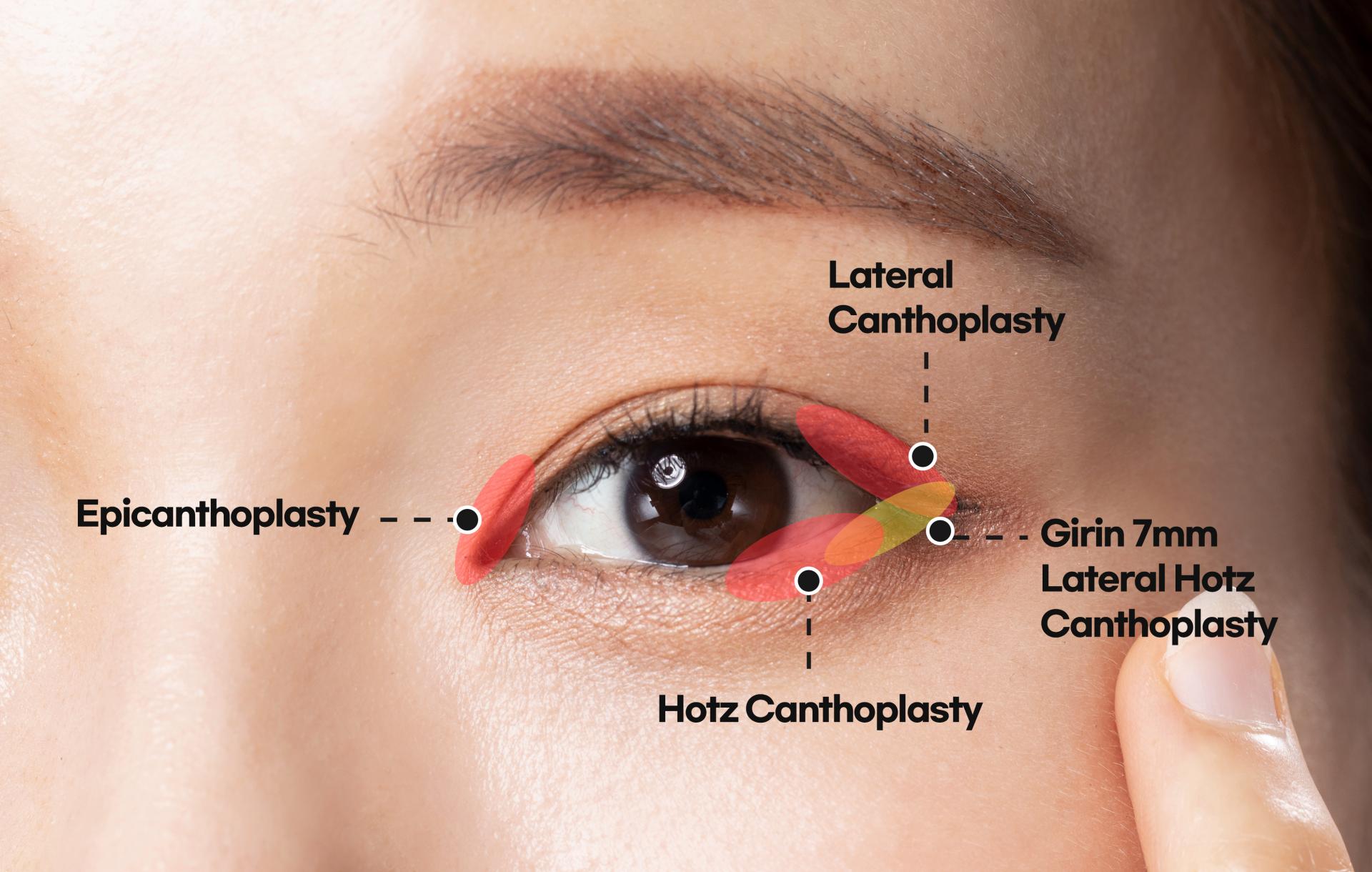Enhancing Eye Aesthetics with Precision
The eyes are often regarded as windows to the soul, and enhancing their aesthetics has become a pursuit for many seeking captivating beauty. Canthoplasty, a surgical procedure targeting the outer corners of the eyes, offers a path to achieve precisely that. In this comprehensive guide, we will delve into the world of canthoplasty, understanding its purpose, procedures, and the transformative effects it holds.
Understanding Canthoplasty: Canthoplasty
is a surgical procedure designed to alter the shape and symmetry of the outer corners of the eyes. By carefully adjusting the positioning of the eye’s lateral or medial canthus, skilled plastic surgeons can achieve a more balanced and harmonious appearance. This procedure is commonly sought by individuals who wish to rejuvenate their eye aesthetics and achieve a refreshed look.
Types of Canthoplasty Procedures:
Two primary types of canthoplasty procedures are commonly performed: lateral canthoplasty and medial canthoplasty. Lateral canthoplasty focuses on the outer corners of the eyes, and it is often employed to create a wider and more open eye appearance. On the other hand, medial canthoplasty targets the inner corners and is utilized to adjust the eye’s shape, often addressing issues like a narrow eye width or a downward slant. Both procedures are tailored to meet the specific aesthetic goals of the individual.
Candidacy and Consultation:
Not everyone is a suitable candidate for canthoplasty. Ideal candidates often include individuals who are seeking to enhance their eye aesthetics, improve symmetry, or address specific eye-related concerns. Factors such as age, overall health, and the specific structure of the eyelids play a role in determining candidacy. A consultation with a skilled and experienced plastic surgeon is vital to assess these factors and discuss the patient’s expectations.
The Canthoplasty Process:
The journey of undergoing canthoplasty involves several key steps. First, a thorough examination and assessment are conducted by the plastic surgeon to tailor the procedure to the individual’s needs. The surgery is typically performed under local anesthesia, ensuring the patient’s comfort throughout the process.
Benefits and Results of Canthoplasty:
The benefits of canthoplasty extend beyond the physical changes. Enhanced eye symmetry and balanced eye width are often achieved, resulting in a more pleasing and refreshed appearance. Individuals who opt for canthoplasty often report increased self-confidence and a newfound sense of satisfaction with their overall facial harmony.
Recovery and Aftercare:
Following canthoplasty, the recovery period is a crucial time for optimal healing. Swelling and bruising around the eye area are common but tend to subside within a week or two. Cold compresses and prescribed medications can help alleviate discomfort during this phase.

Managing Expectations and Risks:
While canthoplasty offers transformative benefits, it’s important to manage expectations and be aware of potential risks. Patients should understand that achieving optimal results may take time as the body heals and adjusts to the changes. Additionally, results can vary based on individual anatomy and healing factors.
Before and After: Visual Transformations:
Visual examples of before-and-after canthoplasty transformations can provide a powerful testament to the procedure’s potential. These images showcase the remarkable changes in eye aesthetics achieved through canthoplasty. By aligning the before-and-after images with patient stories, readers can gain a deeper understanding of the procedure’s impact on enhancing eye symmetry and overall appearance.
The Surgeon’s Role in Canthoplasty:
The role of the plastic surgeon in canthoplasty cannot be overstated. A board-certified and skilled surgeon brings a wealth of expertise to the procedure, ensuring precise adjustments that align with the patient’s aesthetic goals. Their attention to detail and understanding of facial anatomy are essential in achieving natural-looking results that complement the patient’s unique features.
FAQs About Canthoplasty
1Q: What is canthoplasty?
A: Canthoplasty is a surgical procedure aimed at enhancing the outer corners of the eyes, improving symmetry and aesthetics.
2Q: Who is a good candidate for canthoplasty?
A: Ideal candidates include individuals seeking to balance eye symmetry, adjust eye width, or address specific aesthetic concerns.
3Q: How does canthoplasty improve eye aesthetics?
A: Canthoplasty involves precise adjustments to the canthal ligaments and tissues, achieving balanced eye width and enhanced symmetry.
4Q: Are there different types of canthoplasty procedures?
A: Yes, two common types are lateral canthoplasty, which focuses on outer corners, and medial canthoplasty, targeting inner corners.
5Q: Is canthoplasty a painful procedure?
A: Canthoplasty is typically performed under local anesthesia, ensuring patient comfort throughout the surgery.
6Q: How long is the recovery period after canthoplasty?
A: Swelling and bruising around the eyes are common during the first week or two. Most patients resume normal activities within a few weeks.
7Q: Will there be visible scars after canthoplasty?
A: Skilled plastic surgeons make incisions within natural creases, minimizing visible scarring for discreet results.
8Q: How long do the results of canthoplasty last?
A: Results are long-lasting, but individual factors and the natural aging process may affect how long the outcomes remain optimal.
9Q: Are there risks associated with canthoplasty?
A: While rare, potential risks include infection, asymmetry, and changes in eye shape. Choosing an experienced surgeon mitigates these risks.
10Q: What is the role of a plastic surgeon in canthoplasty?
A: A skilled surgeon assesses the patient’s needs, performs the procedure, and ensures precise adjustments for natural-looking results. Have more questions? Consult a qualified plastic surgeon to learn more about canthoplasty and its benefits.
Conclusion:
Canthoplasty offers a pathway to achieve captivating and harmonious eye aesthetics. With the potential for enhanced symmetry, balanced eye width, and renewed self-confidence, this surgical procedure has the power to transform the way individuals perceive themselves.




